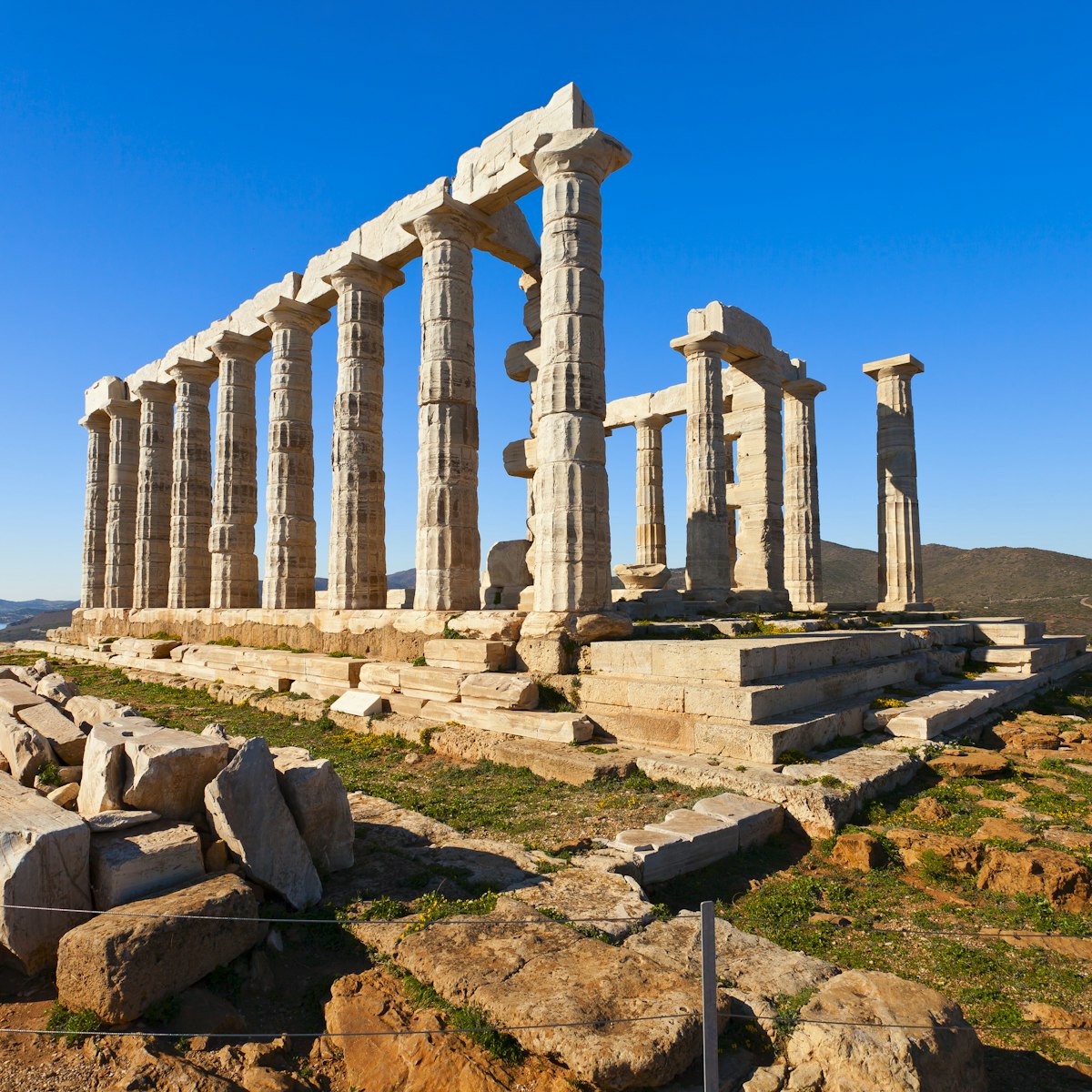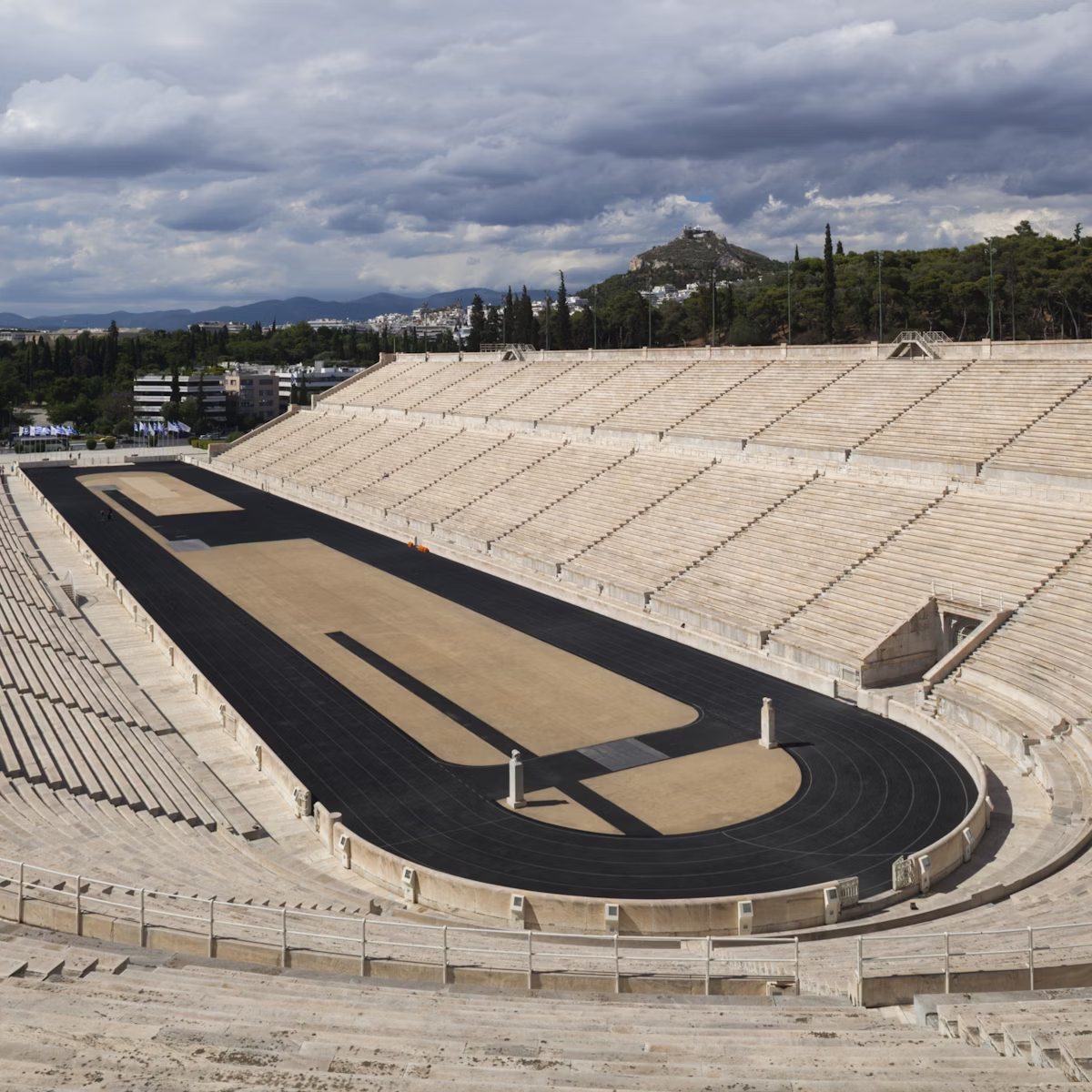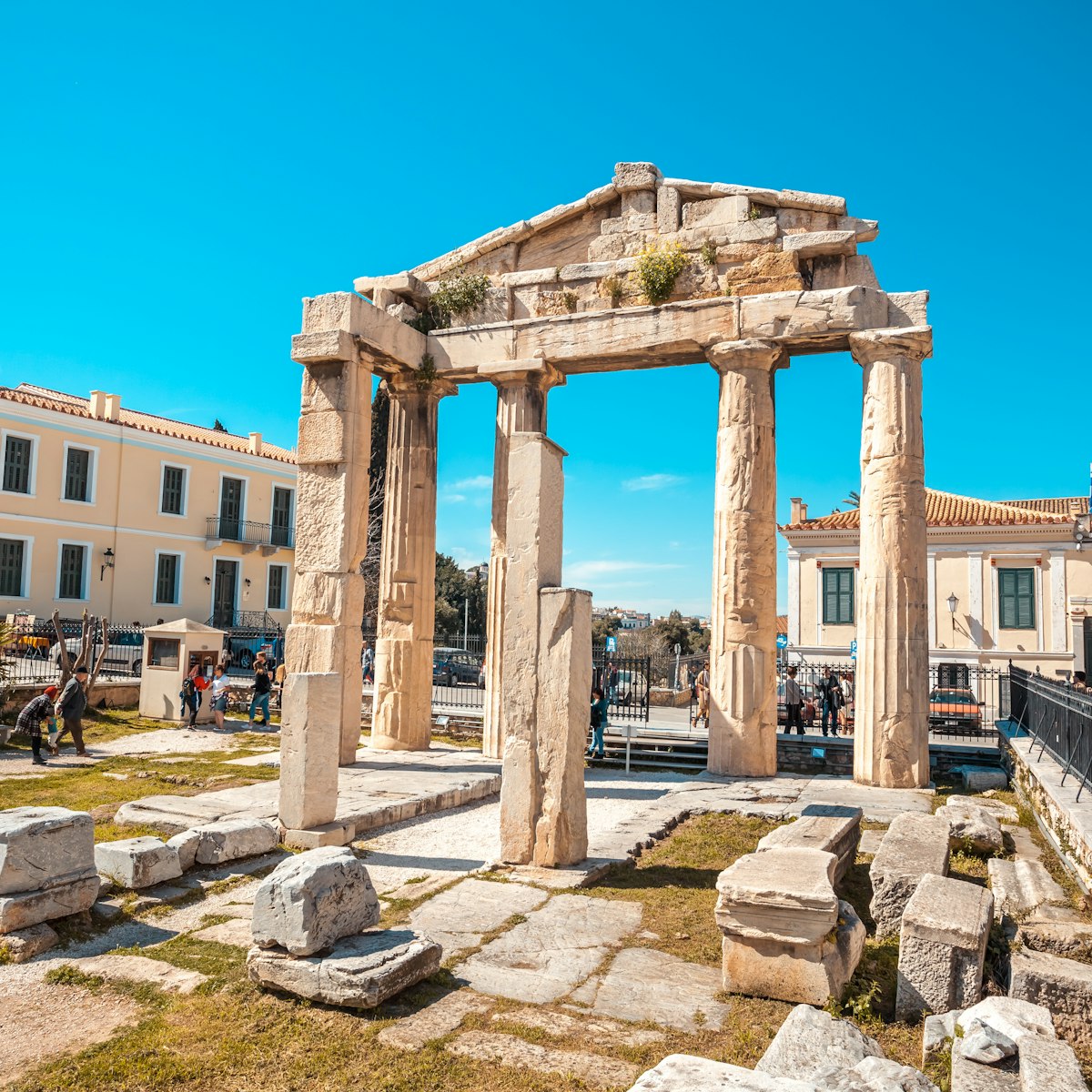The Propylaia formed the monumental entrance to the Acropolis. Built by Mnesicles between 437 BC and 432 BC, it ranks in architectural brilliance with the Parthenon. It consists of a central hall with two wings on either side; each section had a gate, and in ancient times these five gates were the only entrances to the 'upper city'.
The middle gate, the largest, opened on to the Panathenaic Way, the route for the great Panathenaic Procession.
As you walk through on the central boardwalk, admire the thick panels of marble cladding, and as you pass the northeastern section – once used as a pinakothiki (art gallery) – look up to see the marble ceiling panels. These were once painted with gold stars on a blue field. Up ahead, beyond the Propylaia to the right, near the Parthenon, the path leads past (new) ceiling panels, stored upright. They are startlingly huge, giving a sense of the true height of the Propylaia's columns.
The Propylaia is aligned with the Parthenon – the earliest example of a building designed in relation to another. It remained intact until the 13th century, when various occupiers took it as a palace and started adding to it. It was badly damaged in 1645, when lightning struck gunpowder the Turks had stored here. Archaeologist Heinrich Schliemann paid for the removal of one of its appendages – a Frankish tower – in the 19th century. Reconstruction took place from 1909 to 1917 and again after WWII. Restoration was completed in 2010.







